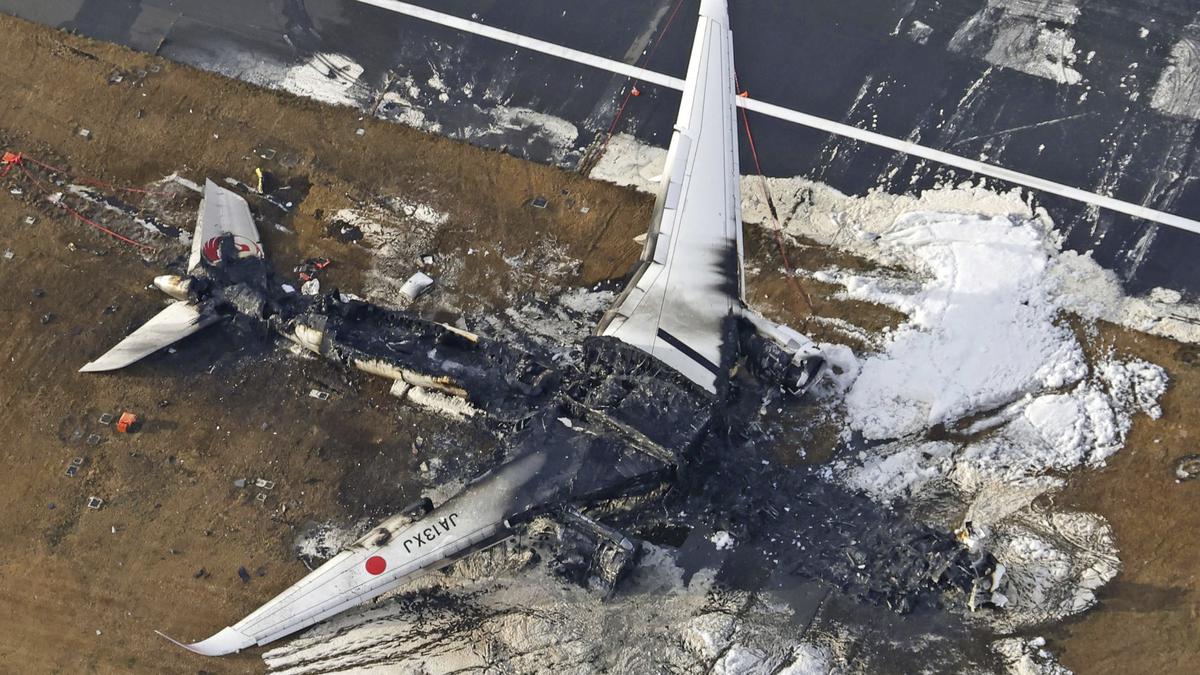
Why is aviation safety under scrutiny? | Explained Premium
The Hindu
What does the Japan jet inferno escape convey about safety measures? How have advances in aircraft manufacturing technology helped reduce mishaps? What about the response of the crew? Why is the Boeing 737 MAX 9 under the scanner worldwide?
The story so far: The issue of air safety played out under intense media scrutiny following two aviation incidents. In the first instance, on January 2, 2024, at around 5.45 p.m., a Japan Airlines (JAL) Airbus A350-900 collided with a Japan Coast Guard De Havilland Canada Dash 8 after its landing, with both aircraft catching fire. While all 367 passengers and 12 crew on the JAL aircraft escaped, there were five fatalities (of a total of six passengers) on the Coast Guard plane that was waiting to depart for the Niigata base with relief supplies following an earthquake in Japan. In the second instance, on January 5, an Alaska Airlines Boeing 737 MAX 9 with 171 passengers and six crew, was departing from Portland, U.S., when a window panel ‘door plug’ blew out mid-air causing depressurisation. The crew put the aircraft into an emergency descent and returned to base. No major passenger injuries were reported.
The incident has brought back renewed attention to the Boeing 737 MAX’s troubled flight safety record, with concerns being raised about quality control and the aircraft’s manufacturing processes. On January 12, the Federal Aviation Administration in the United States announced more “oversight on Boeing” which will be in addition to its probe into the incident. The FAA is to “evaluate Boeing’s compliance with its approved quality procedures”, apart from an “an assessment of safety risks and quality oversight”.
The FAA could even be “exploring the need for an independent third party to oversee inspections and quality in Boeing”.
The National Transportation Safety Board (NTSB) too is probing the incident, with its focus on the cabin pressure control system. Boeing CEO Dave Calhoun had told Boeing employees earlier in a meeting at the company’s factory in Renton, Washington, where the 737s are assembled, “We’re going to approach this – number one – acknowledging our mistake.”
The FAA has added that every Boeing 737 MAX 9 with a plug door would remain grounded till there was a thorough review to ensure its safe return to operation. Under the FAA’s Emergency Airworthiness Directive, which affects about 171 jets across the world, airlines will be required to inspect aircraft (up to eight hours a plane).
The door plug is a space in the fuselage that allows for an additional emergency exit door to be installed. In the Alaska incident, parts of the seat next to the door plug were damaged, while some seat frames were found twisted. The door plug was found later in a neighbourhood in Portland. A few mobile phones of passengers were sucked out.
Alaska Airlines, and later United Airlines, reported their aircraft technicians finding “loose hardware” on some aircraft.













